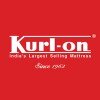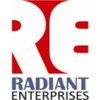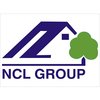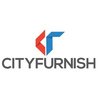Filter interviews by
Vision Exports Production Supervisor Interview Questions and Answers
Vision Exports Production Supervisor Interview Experiences
1 interview found
I applied via Approached by Company

(2 Questions)
- Q1. My name is Suleman my contact number XXXXX
- Q2. Name is Suleman my father name is Shahnawaz my mother name is Sahiba my contact number XXXXX my address
Interview Preparation Tips
ur ab main kam kar raha hun वेरी-वेरी good
Top trending discussions






Interview questions from similar companies

(2 Questions)
- Q1. Regarding machines
- Q2. Kind of solving problems in machines explained
(1 Question)
- Q1. Regarding work experience & salary

I applied via Referral

(2 Questions)
- Q1. You are looking for change
- Q2. How many years experience
Interview Preparation Tips
I can do very well in your organization to tell them

I applied via Naukri.com and was interviewed before Apr 2021. There were 2 interview rounds.

(1 Question)
- Q1. Know about experience
Interview Preparation Tips

(2 Questions)
- Q1. Regarding machines
- Q2. Kind of solving problems in machines explained
(1 Question)
- Q1. Regarding work experience & salary

Interview Questionnaire
4 Questions
- Q1. Machine knowledge
- Q2. Skills you have
- Q3. Mental ability
- Q4. Logical thinking

I applied via Naukri.com and was interviewed in Aug 2022. There were 7 interview rounds.
Interview Questionnaire
12 Questions
- Q1. What is this 5s and tpm
- Q2. Tell me about your self
- Q3. What is this kaizen and suggestion
- Q4. What is this tpm and jh steps
- Q5. What is this oee calculation
- Q6. What is this capa and poka yoke
- Q7. What is this torqe value
- Q8. What is this assembly processes
- Q9. What is wsqc and swc and wes
- Q10. What is this kpi Instruction
- Q11. What is this 7 qc tools
- Q12. What is this line processing
Interview Preparation Tips

I applied via Company Website and was interviewed in Jun 2022. There were 2 interview rounds.

(2 Questions)
- Q1. What is tha Gear How to work
- Ans.
Gear refers to the equipment or machinery used in production processes.
Gear is essential for carrying out various production tasks efficiently.
It includes tools, machines, and other equipment used in manufacturing or assembly processes.
Examples of gear in production can be conveyor belts, robotic arms, welding machines, etc.
- Q2. How to work in Gear
- Ans.
Working in gear requires understanding of gear types, proper lubrication, and maintenance.
Identify the type of gear and its application
Ensure proper lubrication to prevent wear and tear
Regularly inspect and maintain gears for optimal performance
Understand gear ratios and how they affect speed and torque
Follow safety protocols when working with gears
Examples: automotive transmission gears, industrial machinery gears
Interview Preparation Tips
the machinery in a vehicle that turns engine power into a movement forwards or backwards.

I applied via Naukri.com and was interviewed before Jun 2023. There were 2 interview rounds.
(2 Questions)
- Q1. Personal details
- Q2. Salary discuss & benefit
(2 Questions)
- Q1. What is 5 s rules
- Ans.
5S is a methodology for organizing a workplace, especially a shared workplace, to improve efficiency and effectiveness.
Sort: Separate needed tools, materials, and instructions from unneeded items.
Set in order: Arrange items so they are easy to use and label them to prevent mistakes.
Shine: Clean the workspace regularly to maintain standards and identify defects.
Standardize: Establish procedures and schedules to maintain...
- Q2. Who is Line manage

I applied via Naukri.com and was interviewed before Nov 2021. There were 5 interview rounds.

(2 Questions)
- Q1. Tell me about yourself?
- Q2. How much did you get earlier?
(3 Questions)
- Q1. What is lean manufacturing
- Ans.
Lean manufacturing is a systematic approach to identifying and eliminating waste in the production process.
Focuses on continuous improvement and waste reduction
Involves all employees in the process
Uses tools such as value stream mapping and 5S
Examples include Toyota Production System and Kaizen
- Q2. What is line balancing?
- Ans.
Line balancing is the process of optimizing workloads across a production line to improve efficiency and reduce waste.
It involves analyzing the tasks required to complete a product and assigning them to workstations in a way that minimizes idle time and maximizes throughput.
Line balancing can help reduce bottlenecks and improve overall productivity.
It is commonly used in manufacturing and assembly line operations.
Examp...
- Q3. What was lead time in your previous company?
(1 Question)
- Q1. If company have all the resources and work is still not being done, what will be your action plan or how will you get the work done on floor?
- Ans.
I would analyze the situation and identify the root cause of the problem before taking any action.
Conduct a thorough analysis of the situation to identify the root cause of the problem
Communicate with the team to understand their perspective and challenges
Develop a plan of action to address the root cause and improve productivity
Implement the plan and monitor progress to ensure success
Provide regular updates to managem
(1 Question)
- Q1. Salary negotiation and offer letter.
Interview Preparation Tips
- Lean Six Sigma
Vision Exports Interview FAQs
Tell us how to improve this page.
Interview Questions for Popular Designations
- Production Engineer Interview Questions
- Production Manager Interview Questions
- Production Officer Interview Questions
- Executive Production Interview Questions
- Production Interview Questions
- Senior Production Engineer Interview Questions
- Production Chemist Interview Questions
- Production Operator Interview Questions
- Show more
Interview Questions from Similar Companies
Vision Exports Production Supervisor Reviews and Ratings
based on 1 review
Rating in categories
|
Quality Controller
6
salaries
| ₹2.5 L/yr - ₹3.6 L/yr |
|
Production Supervisor
5
salaries
| ₹2.2 L/yr - ₹3.6 L/yr |
|
Production Manager
4
salaries
| ₹5.5 L/yr - ₹10.2 L/yr |
|
Supervisor
4
salaries
| ₹1.6 L/yr - ₹3.8 L/yr |
|
QA QC Engineer
4
salaries
| ₹2.1 L/yr - ₹3.2 L/yr |

Home Centre

Damro Furniture

Radiant Enterprise

NCL Alltek & Seccolor
- Home >
- Interviews >
- Vision Exports Interview Questions >
- Vision Exports Production Supervisor Interview Questions













